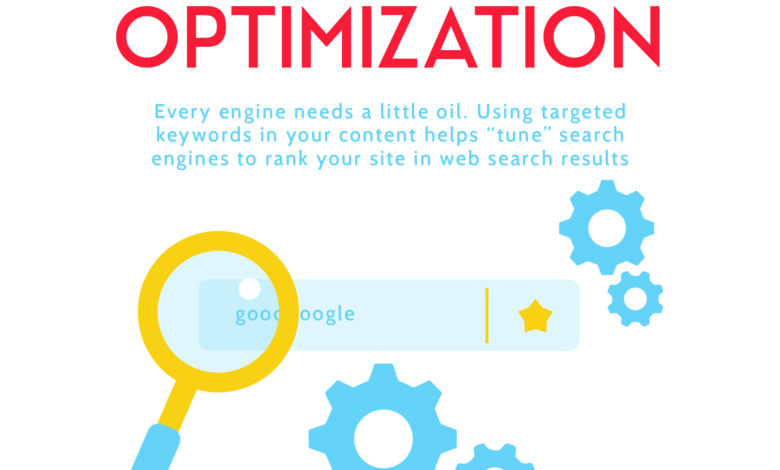Search Engine Optimization Marketing Terms

Search Engine Marketing Terms
- SEO
- PPC
- DA – Domain Authority
- PA – Page Authority
- Bounce Rate
- Above the fold
SEO
SEO or Search Engine Optimization is the most natural way to boost Buy Instagram Followers Malaysia your site’s position in the search engine results.
There are many moving parts in SEO, such as choosing the your keywords you wish your company to rank for and optimizing your website pages for the keywords you want to rank for, writing blog posts and getting backlinks.
Our digital marketing experts are experts in optimizing your site’s on-page blog, getting backlinks. They will help you optimize your website!
This method of marketing via search engines is time-consuming as search engines must crawl through your website to recognize any modifications you make.
If you’d like to be on the top of the list There is a faster method, but it’ll cost you.
PPC
Pay Per Click is similar to SEO however, these are ads paid for and are run by Google. PPC is immediate.
When you’ve create your ad campaign, you’ll be able to start getting noticed immediately.
If you have the money and you’re willing to invest it, you’ll be on the very top of Google results within a matter of minutes.
PPC is also a means of conducting keyword research , however instead of optimization on the page you’ll need to design advertisements.
The ads include two headlines, a description , and an address to your website as well as a landing page.
It is also possible to include extensions such as your business’s number, or hyperlinks to other pages on your website.
SEO and PPC are great on their own However, when combined they can help you grow your company’s revenue!
Learn more about the difference between these two terms in the field of digital marketing and the best ways to utilize both with our guide for beginners to SEO as well as PPC.
DA – Domain Authority
This is a 1-100 number for websites that are assigned by Moz an analytics for marketing company.
The greater the level of your Domain Authority, the more strong your website is and the better your chance of being ranked.
In the process of conducting keyword research domain authority is an indicator that can help you decide whether or not you’ll be able to compete against the businesses that are already getting a high position.
For instance, if you’re DA of 20 is when you conduct Google search for your term and the sites that show up have DA’s ranging from 50 to 70 You are likely not going to rank for the word you are searching for.
PA – Page Authority
Every page on your website has a rank , as well as your website as an entire.
It’s crucial to ensure that you distribute page authority evenly across your website.
If you have a single page (let’s say, your website’s homepage) on your website that is ranked number one in Google and has a page rank of 100, that’s fantastic but what happens to your other pages?
The more pages that are rated with high PA’s, more likely they’ll be able to rank , which means that your company is more likely to being found on search pages.
Bounce Rate
A bounce rate as a measure to search engine optimization occurs the time a person visits your website but only sees the one page.
Google Analytics will show you the bounce rate of your site. If the bounce rate is very high then you’ll need to make adjustments.
The more pages that a user sees and the longer you allow them to spend at your website the better the chance that you will rise in the search results.
*You’ll come across this phrase again in the following section, since it’s somewhat different in comparison to emails.
Above the fold
Anything that’s “above the fold” is the content that appears before the user needs to scroll. What should be above the fold on your website?
The most important content you have along with the H1 tag (for SEO reasons) and an appeal to take action!
If a user arrives at your website, and they do not immediately understand what’s going on, there’s the possibility that they’ll click the back button.
The action we recommend on our home page is to speak with an expert to “accelerate your marketing.”
It is evident that we are an online marketing and management firm and we’d like to invite you to get in touch with us for a consultation with an expert regarding how to market your business on social networks. strategy.
Email Marketing Terms
- List Segmentation
- Bounce Rate
- Hard Bounce
- Soft Bounce
- Open Rate vs Total Opens
- CTR – Click Through Rate
List Segmentation
Segmenting your email lists could be a great way to automate your workflow.
There are a myriad of ways to organize your lists by sector, age, geographical area, new and returning customers, and the list goes on.
The lists can be used to build automations , or to funnel automated processes.
If you’re looking for help with developing a killer automation system to guide your leads through the sales funnel Contact our experts from email marketing create your email marketing campaign!
You can set up a automated new customer, a returning customer automation, or even an automation for customers who haven’t purchased anything in the past few days.
Whatever way you choose to divide the lists you have, it must always be a plan in place.
Bounce Rate
The bounce percentage in the marketing email world is the proportion of emails not included in your marketing campaign.
When your bounce percentage is very high it could be an problem in your mailer.
or the domain you’re sending emails from. So, be sure to keep monitoring your bounce rate every time you send an email.
There are two kinds of bounces: a hard bounce, and soft. two crucial terms in marketing that you should understand to be able to run effective email marketing campaigns.
Hard Bounce
When you are sending out email campaigns you’ll probably see bounces.
Hard bounces refer to emails that were not sent. There are two primary causes for this.
The email might be invalid, therefore, if you have an unintentional subscriber list ensure that the email address you have entered is accurate or you’ve been blocked.
This is the reason it is vital to build your email list naturally.
This implies that you’ve collected emails from individuals who have given you their consent to send them emails. Don’t purchase lists of email addresses.
This can be very damaging over the long term – when a large number of people report or block that you are spamming, your ability to deliver will decrease.
Soft Bounce
Soft bounces mean that your email was sent, but bounced back as your inbox was full.
The email server was down when the email was sent, or perhaps the message was too big.
Some APIs for email will attempt to deliver these email addresses several more times before giving up.
If the bounces are persistent until the time comes, the API will take down this email from the list of subscribers.
Open Rate vs Total Opens
Certain email platforms show the open rate along with the number of total open.
It is crucial to understand the distinction between these two marketing terms. The open rate of your email indicates how many users have opened your email.
Some people go back to the same email three times, particularly in the case of coupons or other offer attached to the email.
Accounts for Total Opens are created each time an email was opened.
CTR – Click Through Rate
While open rates look fantastic on paper, the click-through ratio is the one you need to be most concerned about.
The aim of the majority of email marketing campaigns is to keep subscribers interested and encourage them to return to your website.
Engagement can be measured using the open rate as well as click-through rates measure how often they visit your site or how frequently users click.
These metrics are in sync since if people don’t open your email, there’s no way they’ll visit your website.
Now You Know
Did you get to know some market terms?
We understand that some of these may be confusing, but knowing these Click Here concepts will allow you to measure your return on investment, design more effective advertisements, and determine when something is wrong in your advertising campaign (and what you can do to solve it).
If you are able to comprehend these terms of marketing then you’re prepared to move on to expand your company.




